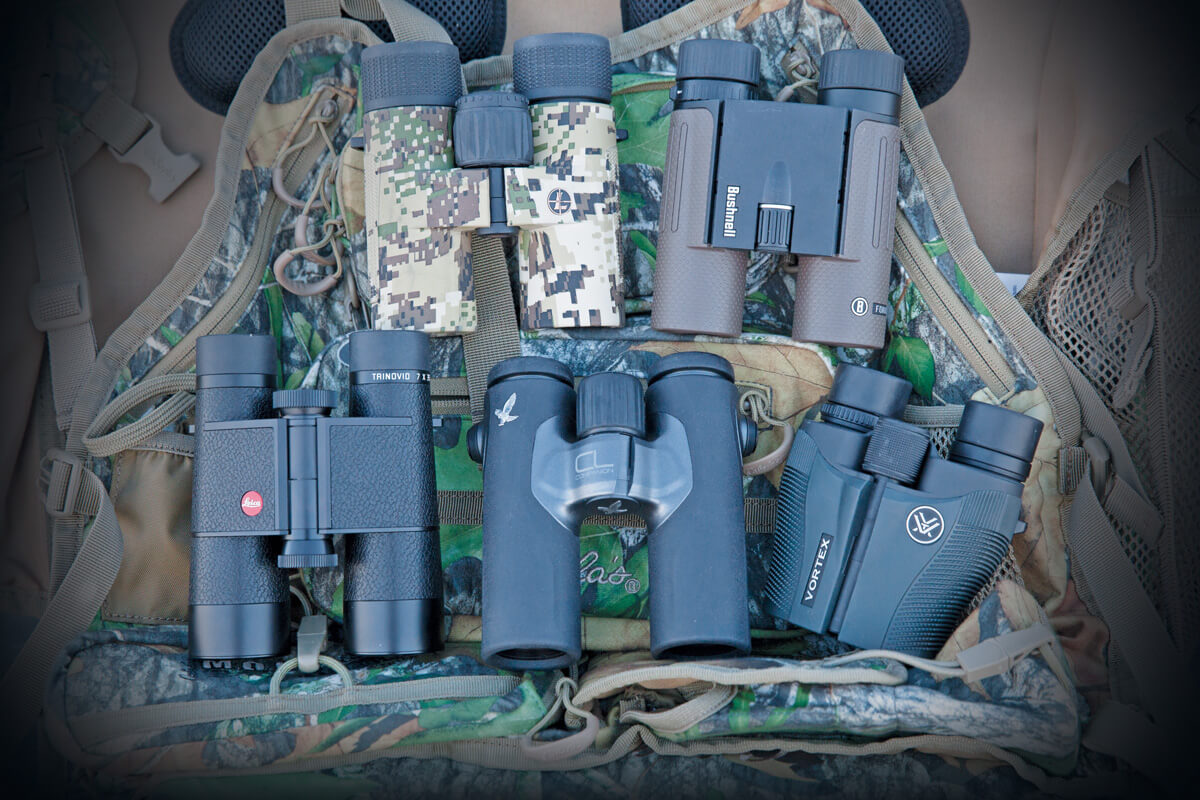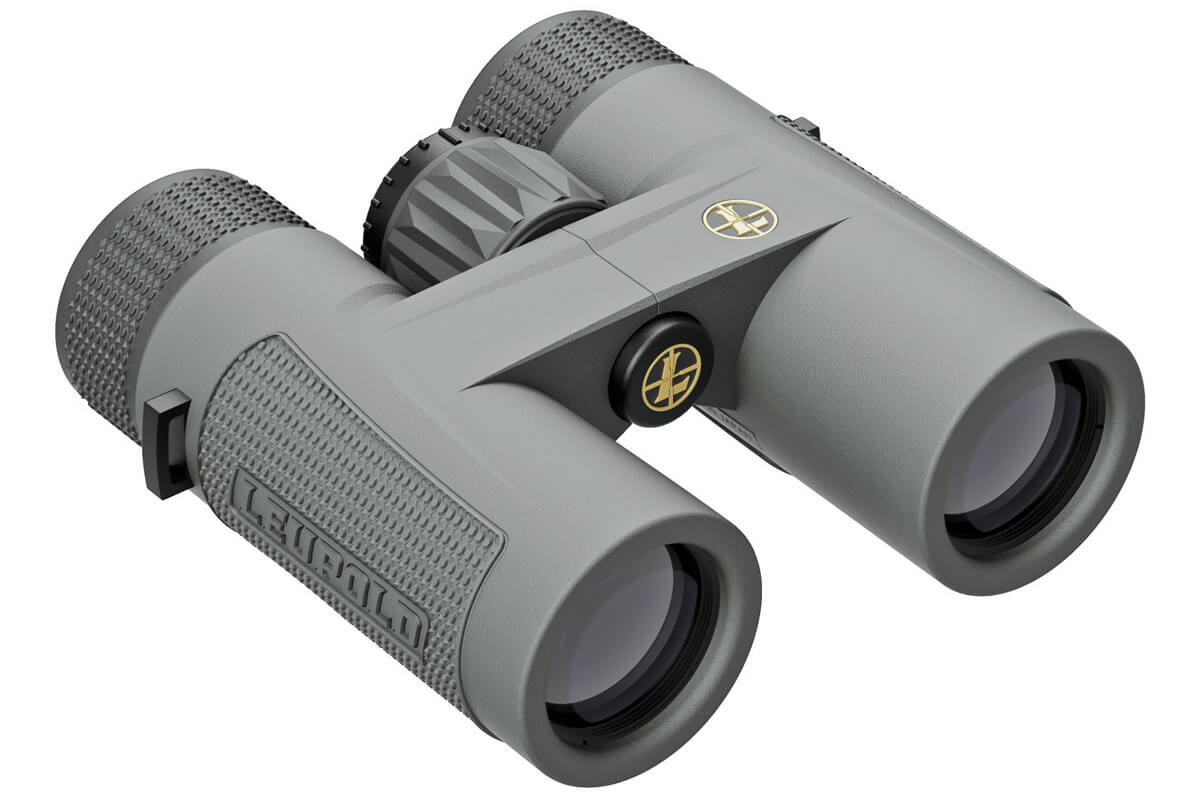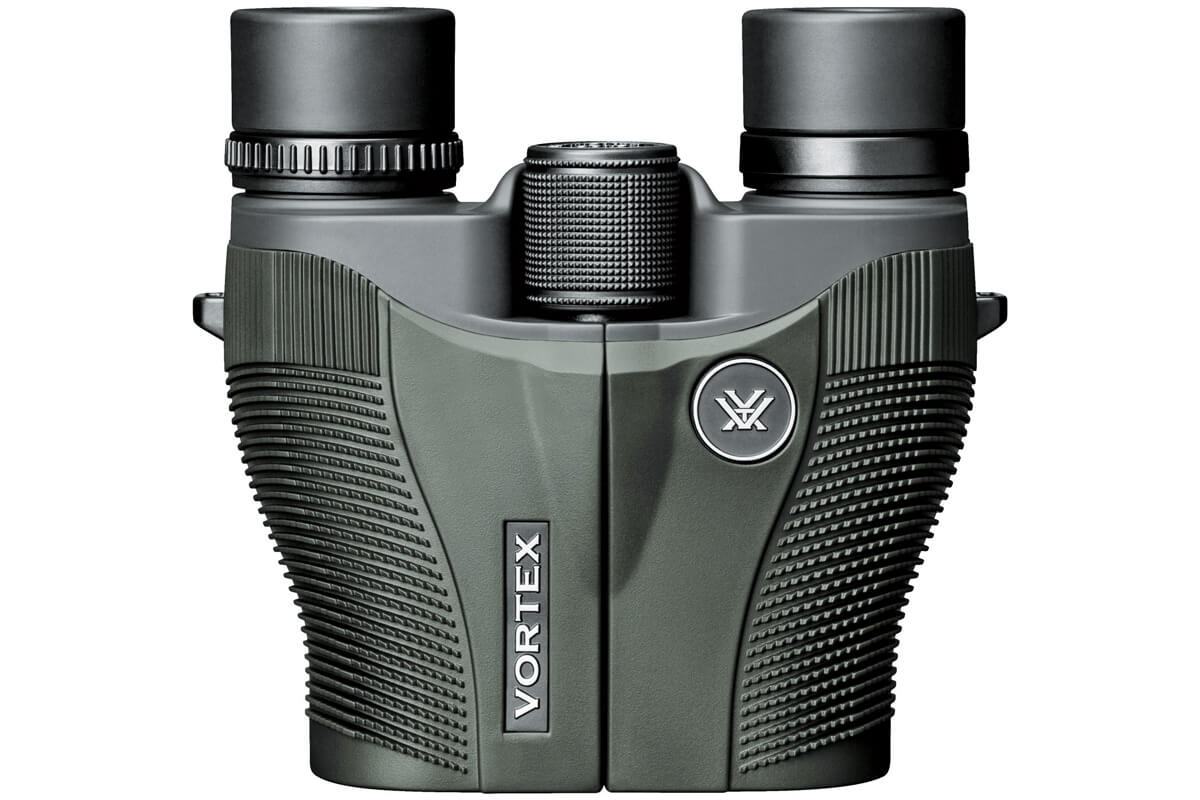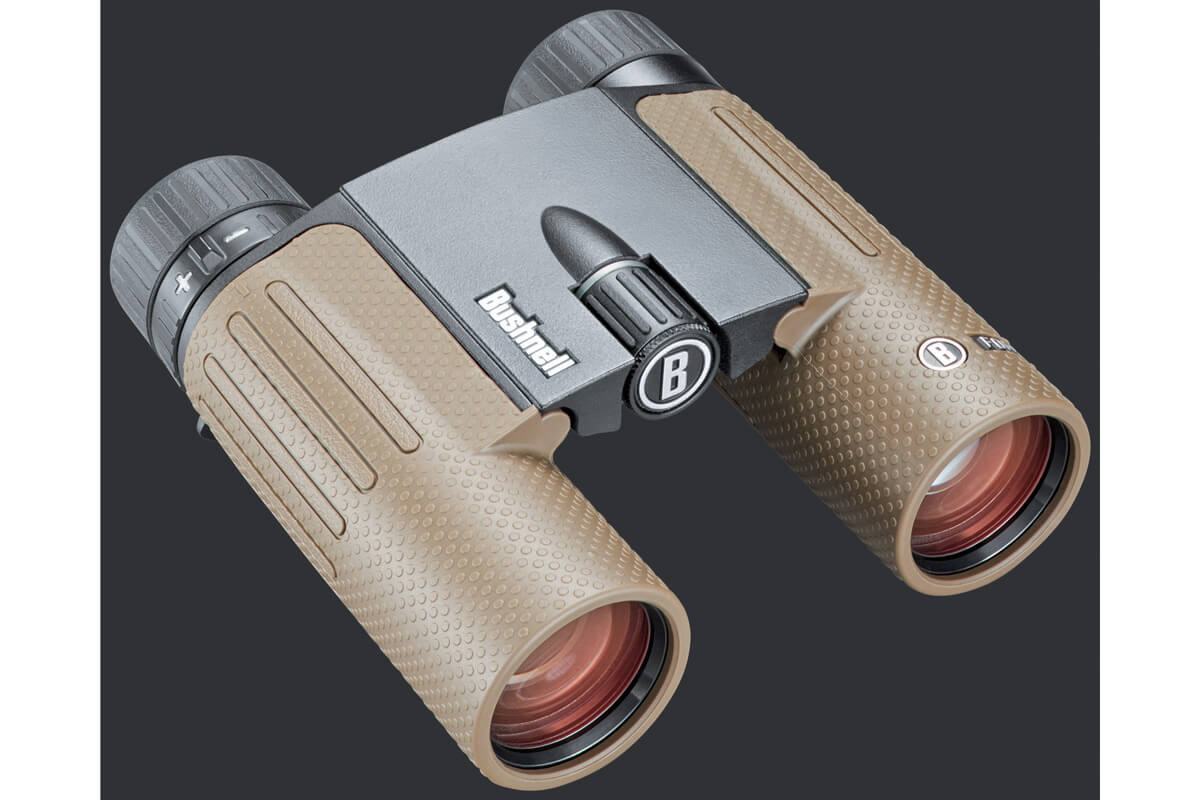
These compact binoculars have great glass and work well in many hunting scenarios.
Sometimes you don’t need all 10 of the Xs or all 42 of the millimeters in what’s become the standard-sized hunting binocular: the 10×42.
That configuration has landed as the default largely because it can do everything pretty well. Its 10-power magnification is powerful enough to enable you to count points on a distant elk, and its 42mm objective lens is large enough to allow an adequate amount of light to reach your eye in most hunting conditions. Its frame is portable enough for easy carrying, and it fits neatly into just about any aftermarket binocular harness.
In other words, it’s the Goldilocks of binoculars, capable of handling a number of tasks just right.
But sometimes that handy 10×42 isn’t quite powerful enough to dig tiny Coues deer out of distant mountainsides. In those situations, you want a tripod-mounted 15X or even 18X with big 56mm objective lenses. At other times, you need a smaller, more compact binocular for close-range glassing, a lightweight optic that’s easily deployed with one hand and that slips conveniently into a pocket or pouch.
The collection of binoculars gathered here fit that latter category. They generally boast modest magnification, but what makes them indispensable for run-and-gun turkey hunters or for close-range bowhunters is that they are small in stature, light in weight, and easily tuck out of the way when not in use.
They do have some shortcomings. Because of the Golden Rule of optics—apparent brightness is determined by the relationship between magnification and objective lens diameter—the image delivered by some compact binoculars will appear quite dark when compared with their larger-lensed brethren. Consider the standard 10×42 binocular. The exit pupil is 4.2mm (determined by dividing the magnification into the objective lens size). But the 10×30 Forge from Bushnell has a 3mm exit pupil (30 divided by 10). You might not notice that difference in bright daylight, but at either end of daylight, you’ll find the image from the compact binocular is dark and grainy.
Happily, many manufacturers adjust for this brightness deficit by lowering the magnification to fit the smaller objective lens diameters. The standard for this class is an 8-power magnification through a 32mm objective. That delivers a 4mm exit pupil. And given the increased field of view of a 7X or 8X binocular, as well as a sharper image due to reduced hand shake, the compact models actually can deliver more optical clarity, resolution, and brightness than larger models, all while costing significantly less than their big brothers. Here are some of the best on the market.
Leupold BX-4 Pro Guide HD 8X32
There’s a whack of utility in this center-bridge binocular, from the easy one-hand operation to the highly textured and durable armor of its barrels. The locking center-dial diopter is crisp and ergonomic, and the oversized focus wheel turns with positivity.
In our low-light evaluation, the Leupold held its own against the European brands, thanks to its premium Japanese glass and twilight-enabled coatings. Color fidelity and contrast were both among the best in our test. The best thing I can say about this mini-mighty is that it delivers a full-size binocular image while weighing only 17 ounces and tucking into the pocket of nearly any field coat.
Plus, the BX-4 ships with a premium fabric case and features Leupold’s excellent warranty. The only dings are the angular eyecups, which may not fit every face and offer only two steps of extension. But that’s a minor quibble for an otherwise high-performing compact binocular.
MSRP: $580 | leupold.com
Vortex Vanquish 8×26

This price-point optic from Vortex shouldn’t be dismissed based on its throwback design or its flimsy feel. The reverse porro prism build is actually one of the most portable and versatile binoculars in our field, and as long as you take care of it, it should last for many seasons.
Let’s start with its attributes. The 8x26mm configuration generates a 3.25mm exit pupil, plenty bright enough for most glassing conditions. And its 12.7-ounce weight and a compact design that resembles an arrowhead fits neatly in the pocket of a turkey vest, ready for those few times you’ll need to pull it out to confirm a distant target.
Demerits include a less-than-robust build and a closed-bridge design that’s difficult to deploy with a single hand. The two-position eyecups are harsh, and the focus is both spongy and imprecise. But considering Vortex’s best-in-class warranty and go-anywhere utility, this is one of the great bargains of the optics world.
MSRP: $119 | vortexoptics.com
Bushnell Forge 10×30
This double-hinge folding roof prism owes its “batwing” design to the classic European opera glasses of the early 1900s. Those elegant, super-compact binoculars were designed to tuck into the breast pocket of an evening jacket. With its whisper-light 13.7-ounce, hand-sized optic, Bushnell has achieved impressive portability in a versatile binocular, and its black-on-brown dimpled armor adds to its style and durability.
In the field, it takes a bit of time and intention to mate the Forge to your dimensions and optical prescription. But once you get it tuned, the open-barrel design is easy to deploy with a single hand. The focus is trim and positive, and the image is adequate for the 30mm objective lenses.
Our main quibble is the magnification. At 10X, this can be a fussy binocular, so light in weight that it is hard to settle in hand, and its stingy 3mm exit pupil makes the image appear dark. We’d rather see this at 8X or even 7X, which would increase its brightness, deliver a wider field of view, and make its image appear less jumpy. But for a truly compact binocular that’s as at home on a family vacation as in a turkey blind, this is a great choice—and a noteworthy bargain.
MSRP: $249 | bushnell.com
Leica Trinovid 7×35

When friends ask me to recommend a classic compact binocular, my mind drifts to this Leica 7×35, the platonic ideal of the category and the brightest (and priciest) binocular in this collection of compact units.
The Trinovid’s classic styling suggests a sophisticated travel optic, but it’s among the toughest, most reliable field binoculars I’ve ever tested. My 10-year-old heirloom is full of honestly earned dents and scratches that give it character without diminishing its optical performance.
One-hand operation is tough, owing to its closed-bridge design, but that’s about the only knock I can assign. The Trinovid has pinpoint clarity, gorgeous lines, and immaculate low-light performance thanks to its European glass and first-rate coatings. This modern classic actually holds a few surprises—including the front-of-hinge diopter control and a huge 5mm exit pupil.
At just over 20 ounces, the Leica is slightly heavier than its peers, but that heft lends a satisfying balance, and its pebbled texture is easy to grip. The Trinovid has exceptional field talent, elegant style, and lasting durability.
MSRP: $1,499 | leicacamerausa.com
Swarovski CL Companion 8×30 B
This light, bright, and handy binocular is clutch for run-and-gun turkey hunters as well as walkabout bowhunters. Both types must often rely on one-handed binocular operation to scan distant images with minimal movement, and the finger-gripping tubes and under-barrel thumb detents lock the Swaro in place.
Open-country hunters may wish for more magnification, but for glassing inside 400 yards, this is all the optical reach you need. Swarovski’s proprietary strap connections offer a multitude of carry options, and the center-wheel diopter focus is crisp and positive. The focus wheel turns smoothly and comfortably.
The contrast and brightness of the image delivered by the CL Companion is among the best in the compact field, and the stylish design makes these as suitable for box seats at the Vienna Opera House as they are for black-bottom gobblers. At nearly $1,500, this is an investment-grade binocular, but its performance will have you reaching for it even for big-country glassing.
MSRP: $1,443 | swarovskioptik.com
The Case for Monoculars
For hard-core minimalists, the two barrels of a binocular are a waste of both space and weight. They rely on single-tubed monoculars for their glassing tasks.
These tiny spotting scopes are useful for quick scans and mid-distance panning, and some models have precise focus controls to sharpen images at various distances. But their greatest attribute is portability. They slip easily into the pocket of a hunting vest or trouser, and they generally don’t require straps or a lanyard to tote in the field.
But monoculars are limited by their ergonomics. It’s hard to steady a single-tube optic to really resolve details of a distant target. That’s why many have attachments so they can be mounted to a tactical rail or a tripod or any available rigid support. They also tend to have lower magnifications in order to minimize shake.

One of the best of these do-everything monoculars is Vortex’s handfilling 8×36 Solo. The unit is available in a variety of configurations, but the 8×36 model includes an integral utility clip that enables a variety of carry options but can also be used to attach the unit to a support for hands-free viewing. At only 9.7 ounces, this little gem doesn’t take much room or weight but gives you the ability to quickly confirm that incoming bird is a longbeard and not a pesky Jake.
MSRP: $170 | vortexoptics.com









